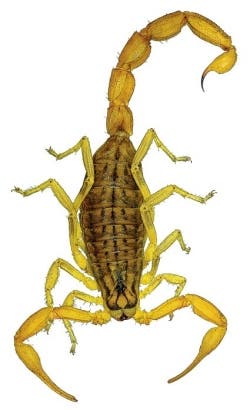The difference between a poison and a cure is the dosage – and this could be very well said about this approach. Bio-engineers report that peptides in some venoms bind to cancer cells and block tumor growth and spread and could be effectively used to fight cancer – the only problem is they might also harm healthy cells.
Bioengineer Dipanjan Pan and coworkers at the University of Illinois, Urbana-Champaign, are now using polymeric nanoparticles to deliver venom toxin directly to cancer cells. The problem is limiting the effect it has to the cancer cells, and avoiding any damage to healthy cells. The researchers inserted a derivative of TsAP-1, a toxin peptide from scorpion venom, into specific spherical nanoparticles, constructing what they call NanoVenim. When they tested it on cancerous tissue in the lab, NanoVenim was 10 times more effective at killing the cancerous cells and spreading their growth than the toxin alone.
They researched a similar procedure with a nanoparticle-encapsulated version of melittin (a toxin from honeybee venom), and the results were even more promising. The toxin had potency against cancer cells, but on the upside, it didn’t do any damage at all to healthy cells.
“We have known for some time that venom toxins have anticancer potential, if only we could deliver them safely and selectively to tumors,” said David Oupicky, codirector of the Center for Drug Delivery & Nanomedicine at the University of Nebraska Medical Center.
However, the trick here is nanotechnology; even a simple nanotechnological delivery method can work wonders (such as increasing the efficiency 10 times). Pan’s idea with scorpion venom injected through nanotechnology “is new, and the method of incorporation into nanoparticles is fairly new as well,” he added. But it’s perhaps the honeybee venom which shows the most promise:
“[That it] works against cancer cells but appears not to damage erythrocytes is an important step toward practical application. It will be very interesting to see how the particles behave in vivo.”
Now, having successfully tested the idea on lab tissue, the next step is to conduct animal tests. Pan’s team founded a start-up, VitruVian Biotech which will conduct testings on rats and pigs. However, with so promising results, he believes that they could start human clinical trials in three to five years.











